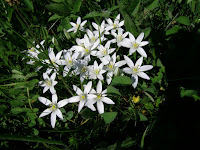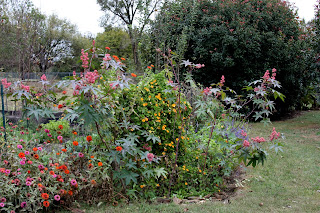Native Plants for Cottage Gardens

Love for cottage gardens has grown as we move away from manicured British garden design and make our own American style gardens. North Carolina is zones 6 and 7 , much like our area so their native plant advice is always good to check. NC has a much more active Extension service for home gardeners and as a result they post many more advice and plant-specific articles of interest. You'll find their 4-step Go Native planning site here , complete with how to think about the process and plant guides. Another resource we can use is the Missouri Botanical Garden's link called Selected Perennials for Oklahoma Gardens. Oklahoma Garden Clubs posted an assortment of native plants for home gardens on their website , too. Their selections are primarily ornamental grasses. The OK panhandle, Oklahoma City, Southeast, south central and northeast OK all have different soil, annual rainfall and temperatures so do some more research for your specific climate when deciding what to plan






